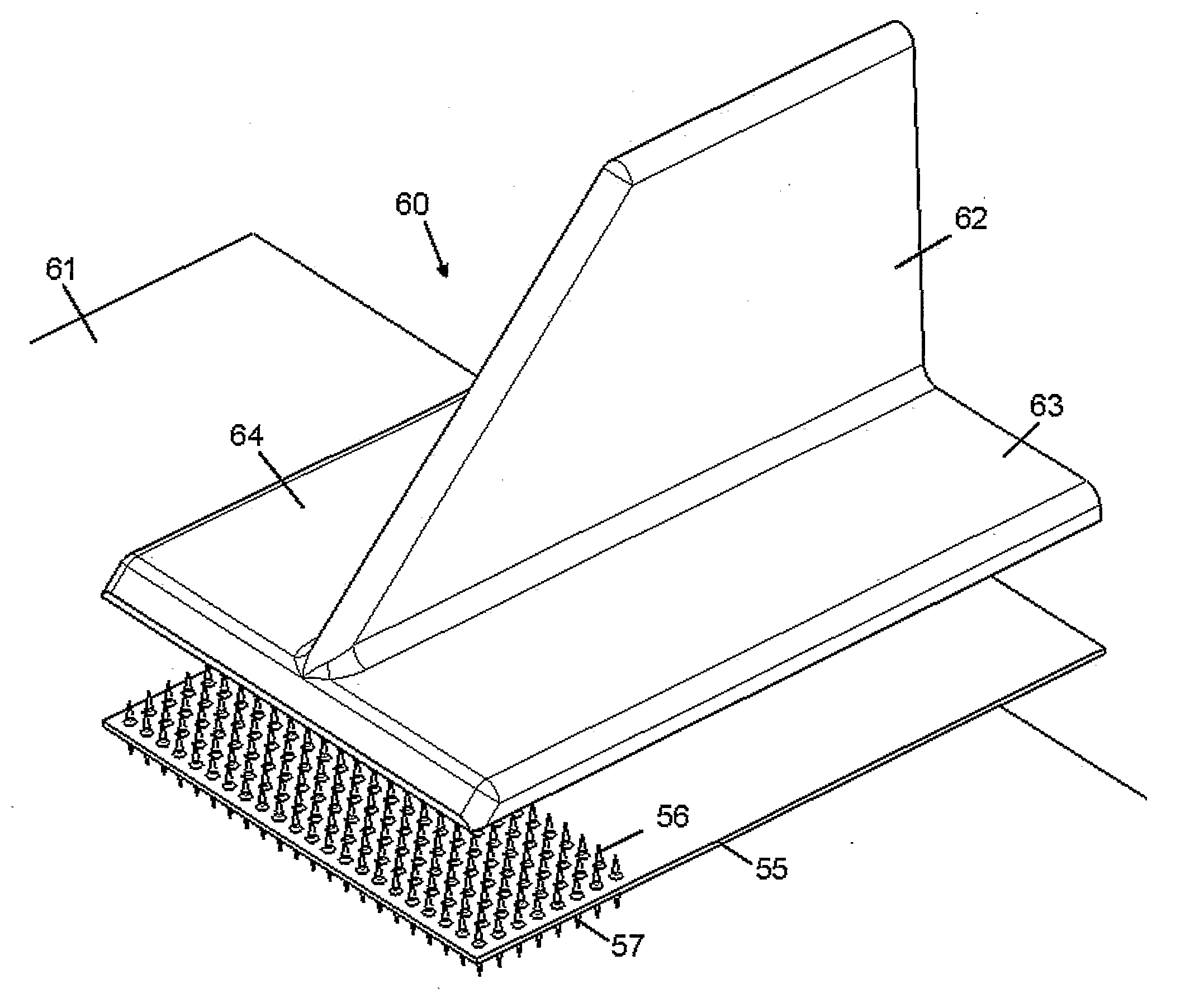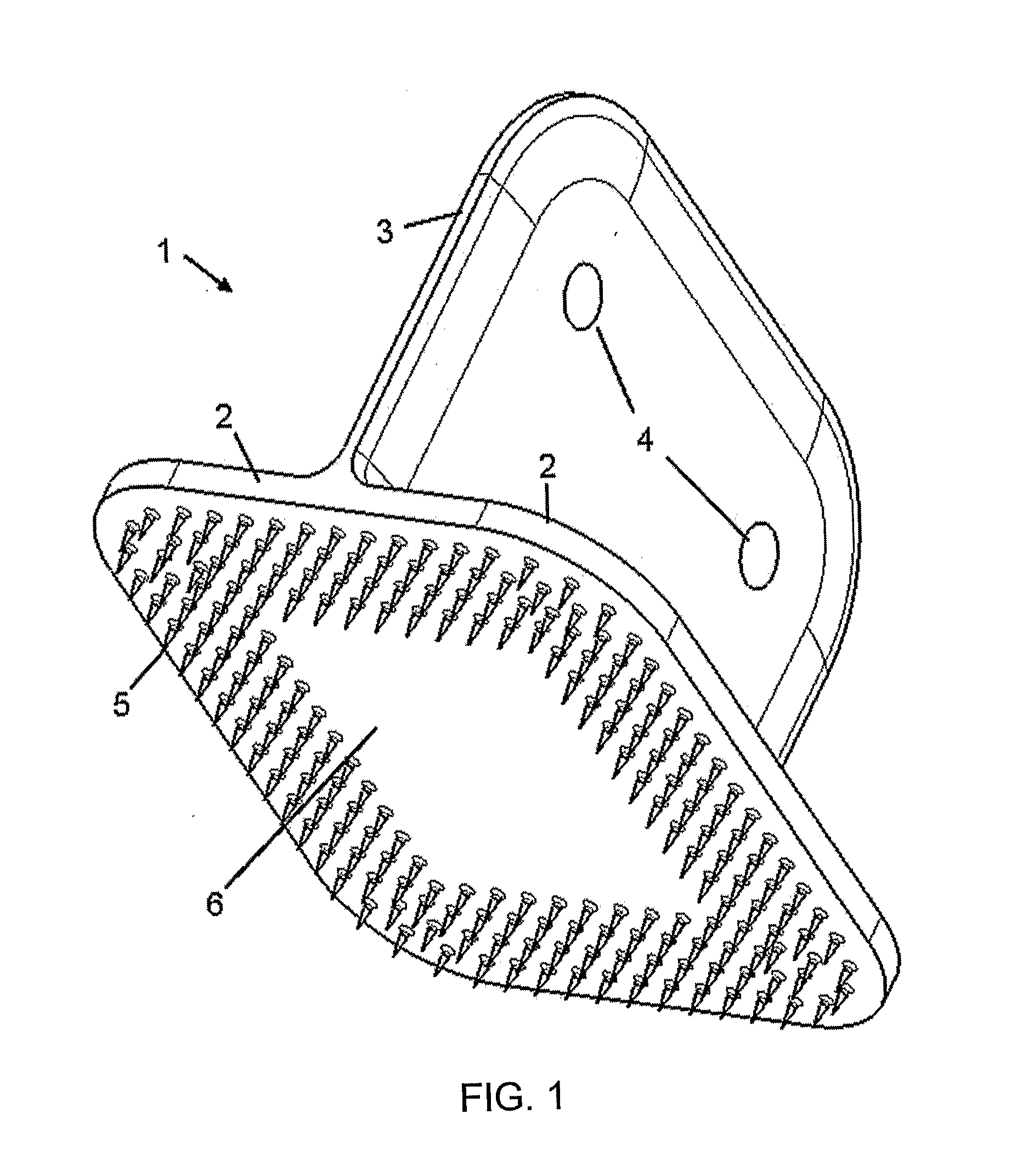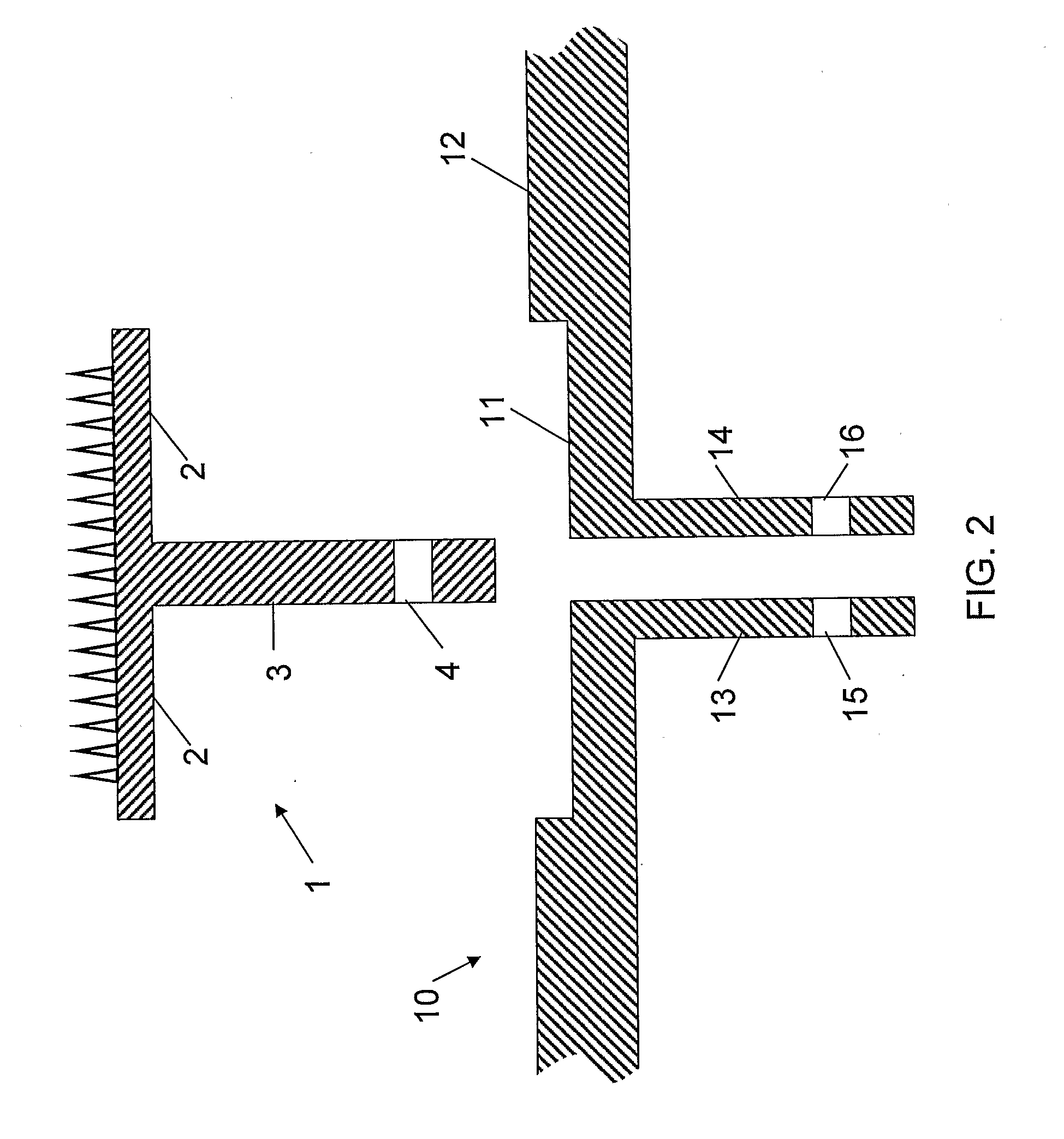Preparation of a component for use in a joint
a technology for components and joints, applied in the field of preparation of components, can solve the problems of large weight increase, de-lamination around fastener holes, and the tendency of fastener joints to be particularly weak, and achieve the effect of reducing the risk of de-lamination
- Summary
- Abstract
- Description
- Claims
- Application Information
AI Technical Summary
Benefits of technology
Problems solved by technology
Method used
Image
Examples
Embodiment Construction
[0056]A metallic floating rib foot 1 shown in FIG. 1 comprises a web portion 3 and a pair of flanges 2. The web portion 3 has a pair of fastener holes 4. An array of projections 5 extend from the underside of the flanges 2. As can be seen in FIG. 1, the projections 5 are distributed evenly over a bond region which extends around the periphery of the flanges 2 and surrounds a central region 6 with no projections.
[0057]The floating rib foot 1 is integrated into a mould tool 10 as shown in FIG. 2. The mould tool 10 has a mould surface 12 with a recess 11 which receives the flanges 2 as shown in FIG. 3. Web portion 3 extends into a channel between a pair of plates 13, 14, and is secured in place by a fastener 17 passing through a pair of holes 15, 16 in the plates 13, 14 as shown in FIG. 3. In the example of FIG. 3 only one fastener 17 is shown, but in alternative arrangements two or more fasteners may be used to secure the floating rib foot to the mould tool. In the case where two fast...
PUM
| Property | Measurement | Unit |
|---|---|---|
| Width | aaaaa | aaaaa |
| Height | aaaaa | aaaaa |
| Metallic bond | aaaaa | aaaaa |
Abstract
Description
Claims
Application Information
 Login to View More
Login to View More - R&D
- Intellectual Property
- Life Sciences
- Materials
- Tech Scout
- Unparalleled Data Quality
- Higher Quality Content
- 60% Fewer Hallucinations
Browse by: Latest US Patents, China's latest patents, Technical Efficacy Thesaurus, Application Domain, Technology Topic, Popular Technical Reports.
© 2025 PatSnap. All rights reserved.Legal|Privacy policy|Modern Slavery Act Transparency Statement|Sitemap|About US| Contact US: help@patsnap.com



